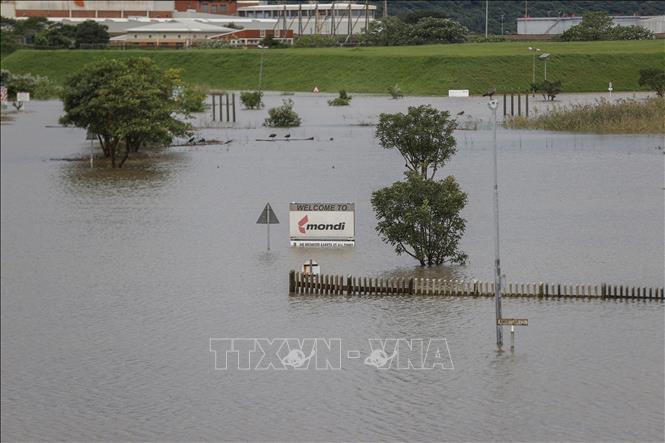
Flood scene caused by prolonged heavy rain in Durban, South Africa on April 12, 2022.
The announcement of the Office of the President said that the two provinces of Mpumalanga and the Eastern Cape are the places most heavily affected by floods due to heavy rain lasting for many days - one of the consequences of the La Niña weather phenomenon. . In addition, there are five other provinces in a similar situation: Gauteng (with the administrative capital of Pretoria and major economic center Johannesburg), KwaZulu-Natal, Limpopo, Northern Cape and North West. A national disaster declaration is intended to give the government additional powers, including the procurement and supply of goods and services, and the ability to bypass restrictions under applicable law.
The South African presidential office said in a statement that the flooding had had a wide-ranging impact, from submerging homes and vehicles to damaging basic infrastructure. National police and defense forces can be mobilized to help people respond to natural disasters.
Presidential spokesman Vincent Magwenya said the National Center for Disaster Management had received numerous reports of people's homes being flooded, vehicles swept away by floodwaters, spillways and spillways. Drainage facilities, roads, bridges and hospitals in Limpopo province were damaged. In the agricultural sector, farmers have suffered crop and livestock losses, and further losses are expected as the South African Meteorological Service forecasts heavy rains to persist.
Heavy rains causing flooding are expected to continue this week, according to the South African Meteorological Agency. Gauteng province and parts of North West province are expected to be hit hard by the bad weather.
Mr Magwenya said with La Niña continuing to strengthen, South Africa could experience above-normal rainfall and below-normal temperatures in areas of summer rain. This means that households and individuals will need temporary shelter, stockpiling food and blankets, as well as large-scale and costly infrastructure restoration.
Meanwhile, the National Disaster Management Center (NDMC) will continue to monitor and coordinate response and recovery measures. This includes issuing early warnings about weather forecasts.
On February 9, President Ramaphosa declared a state of national disaster in his annual State of the Nation Address speech regarding the electricity crisis in South Africa in the face of crippling daily power cuts. businesses.
A state of national disaster was also declared in March 2020 in response to the COVID-19 pandemic and in April 2022 in response to flooding in the Eastern Province of KwaZulu-Natal.